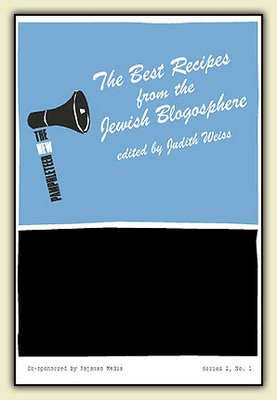There have been many moments when all I could do was sit back in amazement at what my girls have accomplished. One such moment was when the Mistress of Sarcasm received her college diploma last year, with the words “Magna cum Laude” flashing on the overhead screen at the graduation ceremonies. And another was in the fall of 2001, when Elder Daughter was accorded a rare privilege: that of delivering a sermon at Kol Nidre services.
Kol Nidre is the service that ushers in the Day of Atonement, Yom Kippur. It’s arguably the most solemn, most sacred occasion on the Jewish calendar...and it’s a time when the synagogue is packed to the rafters with worshipers, even those that might only attend services once a year. And it is this audience to whom Elder Daughter spoke.
Here, submitted for your perusal by a Proud Daddy, are the words she shared with us that night.
One year ago, while walking home from services on Erev Yom Kippur, a friend and I were discussing the haunting chant of Kol Nidre – the awe and intrigue its words inspire, especially when one imagines the plight of the hidden Jews of Spain whose false vows the prayer is meant to revoke.
My friend told me a story from several years before, when she and her family were vacationing in Spain. They stayed in a small pensione and became acquainted with the Spanish Catholic family that hosted them. One Friday night the woman of the house prepared a huge dinner for her family and their guests. Before beginning the meal this woman excused herself, left the room, and did not return for several minutes. When she came back to the table, she apologized to my friend’s family for her absence, and explained that it is a tradition in her family for the woman of the house to go into the basement and light two candles before every Friday night’s meal. Though it is a tradition that has existed in her family for hundreds of years, she has no idea what the meaning is behind this family custom, only that she is compelled to keep it.
This story was, at once, both heartbreaking and inspiring. Heartbreaking, because this devout Catholic woman is clueless about her Jewish roots, unaware of the theology, laws, and community which are the foundations of her cryptic custom. The ritual of lighting Sabbath candles has been completely disconnected from the faith which ordains it, stripping the ritual of its meaning, draining it of its substance. But the story was inspiring as well, for despite the fact that this woman did not know why her family performed this particular custom, the ritual had survived almost 500 years of secret practice. In some way, in some form, Judaism is still alive in their household.
What this woman does not know is that the very candles she lights in her basement speak the magnitude of Jewish ritual. We light two Shabbat candles to represent the two forms of the 4th commandment: Zachor et yom ha Shabbat l’kodsho - Remember the Sabbath day to keep it holy, and Shamor et yom ha Shabbat l’kodsho - Observe the Sabbath day to keep it holy. G-d did not command for us to remember and observe the Sabbath v’kadsho - and keep it holy, He specifically commanded that we should remember and observe the Sabbath to keep it holy. The ritual of observing the Sabbath - through the lighting of candles, through abstaining from work, through prayer - is what preserves the holiness of the day.
I believe that humans by nature are more likely to hold on to things that are tangible than they are to ideas and philosophies. Even in the past two weeks, as Americans mourn over a great tragedy and unify as a nation, we have searched for the tangible symbols of our nation’s unity - hanging American flags outside of our homes, singing songs infused with national pride. These rituals are more comforting, more unifying, than simply saying “we are American.” The same is true in Judaism. It isn’t enough to say “We are Jewish, this is what we believe.” We are able to say “We are Jewish, this is how we live.” Ritual makes the theology and philosophy of Judaism tangible. What once existed as an idea - an abstraction - now has shape and substance. Ritual becomes custom, custom becomes tradition, and tradition, like an object, like an heirloom or antique, can be passed down through the generations to our children and our children’s children.
In the same way that G-d commands us to remember and observe the Sabbath in order to keep it holy, we are given other symbols and rituals that remind us of our faith and religious duties. In the book of Numbers we are commanded to affix fringes to the corners of our garments in order to be reminded of G-d’s commandments – thus we have tzitzit. In Exodus and Deuteronomy we are commanded to place a symbol on the hand and between the eyes as a reminder of G-d’s commandments. Thus we have tefillin. Likewise are we commanded to write these words upon the doorposts of our houses and upon our gates, which, in turn, takes the form of the mezuzah. Again, we are able to recognize G-d’s appropriation of ritual and of symbols to the practice of His commandments. For those who pray while wearing a tallit, or while donning tefillin, these symbols most likely serve not only as a reminder of G-d’s commandments, but as a spiritual inducement, for participating in ritual engages one’s spirit while also fulfilling a religious obligation.
In 1939 two young doctors met while working together in Spain at the end of the Spanish Civil War. One of these doctors was an American Jew and the other a Spanish Catholic. After six months of working many long hours together, the two doctors had become quite close friends, and continued a correspondence over the next 40 years. One day the American doctor finally made it back to Spain to visit his old friend. During his visit he asked his friend a question that had been on his mind for years. He wondered if this Spanish doctor had Jewish ancestors, since his name was common among Spanish Jews; and if so, wouldn’t he also be Jewish? His friend answered him by taking his hand and leading him down long corridors, to another part of the hacienda, and into a small dark room with no windows, only book-lined shelves and a heavy wooden door.
The Spaniard told his friend “Whenever I am troubled or in need of help, I pray to the Virgin Mary or to Our Savior Jesus Christ or to the saints. I say the rosary and go to Mass. But if all else fails, I come here.” And, saying this, he took a key to the padlock and opened the wooden door. From inside he pulled out a leather box, lifted its cover, and pulled out an extremely worn tallit and a set of ancient tefillin. He carefully bound the phylacteries to his forehead and left arm, then draped the tallit around his shoulders. “After I try everything,” he said, “I do this.” He turned to the wall and began to bow and rock with great reverence, all the while making a low, rhythmic singsong. The American questioned his friend as to where he had learned such a practice and his friend replied that his father had taught him, as his father’s father had done, and as he had taught his own sons in turn.
Though this Catholic man knew nothing of Judaism, he was compelled to quench his aching spirit with the ritual of Jewish prayer. Five hundred years removed from its faith, from its ideology, this ritual still held a divine presence strong enough to ignite even the smallest ember of Jewish spirituality within the man’s soul. However, think of the awe one feels when the meaning of ritual remains intact - when a woman is able to light the Shabbat candles and remember the holy Sabbath day while the awe and reverence for the practice, as well as the faith it represents, are at work as one. Then are we as Jews truly fulfilling our mitzvot. Then are we as Jews truly living our lives and living out our faith as G-d has intended - allowing the ritual to make it holy.
Tonight, on Erev Yom Kippur, we appeal to G-d that we should be forgiven and have our names written once again in the book of life. Tonight we listen to the words of Kol Nidre and are reminded of those Jews who perhaps believed that a faith that was not seen could not be killed, who perhaps chose to hide their religion in order to save it. Tonight is the end of the aseret yemai teshuvah - the Ten Days of Repentance. In these last hours as we stand before G-d in judgment, it is a time for us to turn again toward his commandments. When we sing the words “hashivenu, hashem elecha v’nashuva chadesh yameinu kekedem,” - Turn us to You, O Lord, and we shall return; Renew our days as of old - let us bond our ritual to our faith, ensuring that never again will our tefillin or Shabbat candles be pushed into the damp corner of a basement, but instead that our most holy rituals and treasures of Jewish life remain a reminder upon our arms, between our eyes, and on our gates.
G’mar Tov.
When Elder Daughter stepped down from the bimah, I had tears in my eyes - as did many others in the congregation. But my tears were tears of pride and joy.










No comments:
Post a Comment